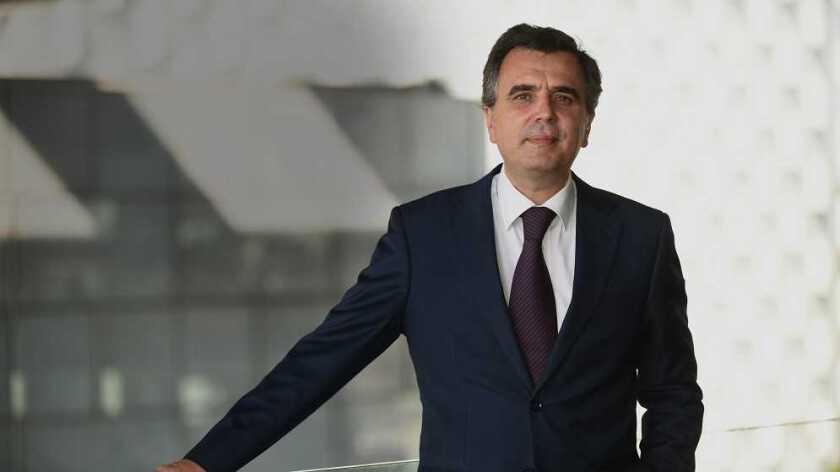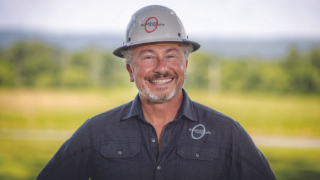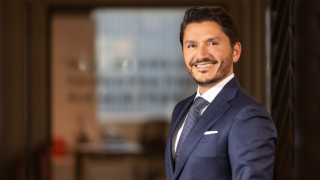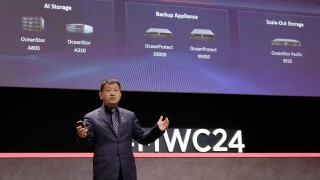Just over six months into his new role and Mario Martín, the CEO of Telxius, has his sights set firmly on his goals for the company: finish existing projects, commerci-alise said assets and build part- nerships with over-the-top providers (OTTs). Telxius, the telecoms infrastructure unit of the Telefónica group, has been hard at work over the last two years doing what Martín describes as “carving out best-in-class assets from Telefónica and consolidating Telxius as a leading infrastructure company”.
During that time he says the company has delivered on its “ambitious business plan” as well as incorporating new shareholders, “crystalising Telxius’s value and strengthening our capital structure”.
The company itself is divided into two distinct businesses: fibre-optic submarine cables and towers. “On the cable side, we count on approximately 87,000km of submarine cable infrastructure,” says Martín. “Our two most relevant routes are the US-Latin America one and the US-Europe one.” As for the tower side of the business, Telxius owns and operates close to 17,000 sites across six markets: Spain, Germany, Brazil, Argentina, Chile and Peru. “We are leaders in four out of those six markets,” boasts Martín.
Cable updates
Unlike many with mixed feelings about the entrance of OTTs in the subsea cable space, Martín and Telxius are excited and positive about the change and, he claims, they are poised to capitalise on these new partnership opportunities.
“We have extensively developed our relationship with over-the-tops over the last few years. In fact, OTTs have become a key contributor to Telxius’s growth over that time,” he explains. “We are close to establishing long-term partnerships and alliances with some of them – this of course means building trust. Our MAREA cable, a project with Microsoft and Facebook, is an excellent example of those partnerships. We expect to be expanding these types of relationships in the future.”
With the ongoing debate on subsea projects that are missing out on the cable landing station and connecting directly into the data centre, once again Martín sees such infrastructure as new business opportunities. “A cable landing station is a unique asset. We have 27 landing stations across the different markets were we operate. We believe this is a rising trend, with high capacity connections to data centres meaning high capacity direct connections to and from the main companies in the world and this means new business opportunities for Telxius.”
Martín says that it’s exactly what they’ve chosen to do in Virginia Beach in the US, where “we decided to land the first two submarine cables – MAREA connecting to Europe and BRUSA connecting to Brazil – and we established expanded connections to Ashburn”.
Virginia Beach
Martín adds: “We took the decision to have our cables land in Virginia Beach in the knowledge that we would be very close to Ashburn, which is a massive data centre hub. It was a decision made jointly by our partners, Microsoft and Facebook, and us.” Martín says that both new cables are going according to plan and on a commercial front have exceeded expectations, largely due to timing.
“MAREA has come along at a time when many of the other existing cables on that route are close to the end of their lifecycle. In that context, MAREA offers a diverse new route between the US and Europe,” says Martín. The cable offers “the highest capacity ever built, with 160Tbps and probably the best latency on the market”. They “saw clear interest in pre-sale activity before MAREA was put into service”, but that commercial expectations have been further exceeded since the cable was ready for service a few months ago.
As for BRUSA, which will link Virginia and Rio de Janeiro in Brazil, Martín says: “We expect to complete the project by Q4 of 2018 and it is obviously a key part of our global infrastructure. Once again, on pre-sale activity, we are seeing a lot of interest and we’re convinced that once it goes live that demand will accelerate.”
Back in May, Telxius collaborated with Equinix on a new cable landing station at Virginia Beach to support the MAREA and BRUSA systems. The partnership sees the two firms extending backhaul capacity on both cables from the landing stations, where both terminate, to the Equinix DC2 International Business Exchange data centre in Ashburn, Virginia.
“The partnership with Equinix was done to further enable communications and it complements the expertise Telxius has developed over the years, which will remain critical in the long term. We have PoPs in more than 20 Equinix IBX data centres across the globe and we plan on extending that. Equinix on the other hand has access to the world-class connectivity of our submarine cables.”
On the tower side Telxius announced that Sigfox Germany, an internet of things (IoT) solutions provider, partnered with the company to expand the Sigfox network in Germany. “The project connects IoT devices using a low power wide area network (LPWAN). What we’re offering them is access to our tower catalogue in Germany and also access to Telefónica’s German sites, 20,000 throughout the country. From an implementation point of view, it’s progressing very well and they already have presence in close to 350 sites.”
Telxius is “very proud of our partner-ship” with Sigfox and hopes to have agreements with other companies in the future. “We have already started working with some Latin American operators.”
Though Telxius’s footprint is firmly rooted in Europe, there has been a trend of growing data from Asia, one which seems to be accelerating and that is affecting Telxius in its region. “We’re definitely having those conversations often. Of course we don’t plan to expand our infrastructure into Asia, but we’re seeing clear interest from Asian operators and players in the infrastructure we have deployed, particularly on MAREA and BRUSA. So I would agree with that view that there has been an increase in data traffic from Asia.”
5G and accelerating data
The advent of 5G has its place in Telxius’s plans. Martín is well aware of the key role the company will play in this new technology. “The growing demand for infrastructure is driven by the fact that all network operators are starting to prepare for requirements of 5G,” he says.
But how soon will Telxius begin rolling out its 5G plans? “I think it all depends when we start seeing the real deployments by the operators, and I think that will still take some time. In any case, 5G will mean more densification, more fibre and more space in the tower.”
Dynamic and exciting
Operating in such a quick-paced market means that agility and innovation are top of the list for any organisation, but Martín says that any changes to the market were already in motion. “This is a very dynamic and exciting market, but I wouldn’t say it’s changed very significantly over the last five months. We’ve seen announcements coming from new cable deployments and new infrastructure being deployed, supported by various PoPs, but this was something that was already on its way.”
But it’s the tower side that has been gaining the most momentum and has the biggest growth potential for the future.
“In the markets where we operate a lot of attention being given to the tower business, as well as a significant increase in transactions in this area over the last few months, particularly in Europe. I think it shows how important and critical infrastructure is going to be in the future.”
Looking ahead he sets out a number of short- and long-term goals for the company that are the focus of his attention. In the short-term goals Martín wants to complete the new cable infrastructure deployments planned for 2018: MAREA is already in service and BRUSA will be ready shortly.
“Additionally we will soon be getting an extension of our network [the SAM-1 cable connecting the US, central America and South America] to the Dominican Republic coming into service by the end of the year,” he says.
He adds that the company wants to “deliver on the ambitious ‘build-to-suit’ plan” it has, which means Telxius specifically builds towers according to the tenant’s specifications, something akin to a turnkey solution.
Other goals according to Martín include “significantly increasing our tenancy ratio”, while at the same time completing its distributed antenna systems (DAS) projects in several markets.
Longer term, as with most growing companies, “the objective is growth, creating new services, attracting new customers and capitalising on the opportunities that 5G will bring”, explains Martín.









